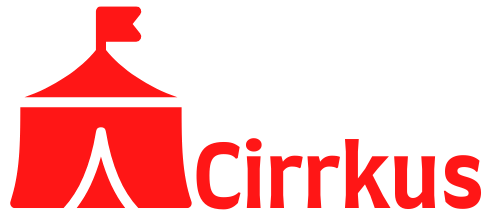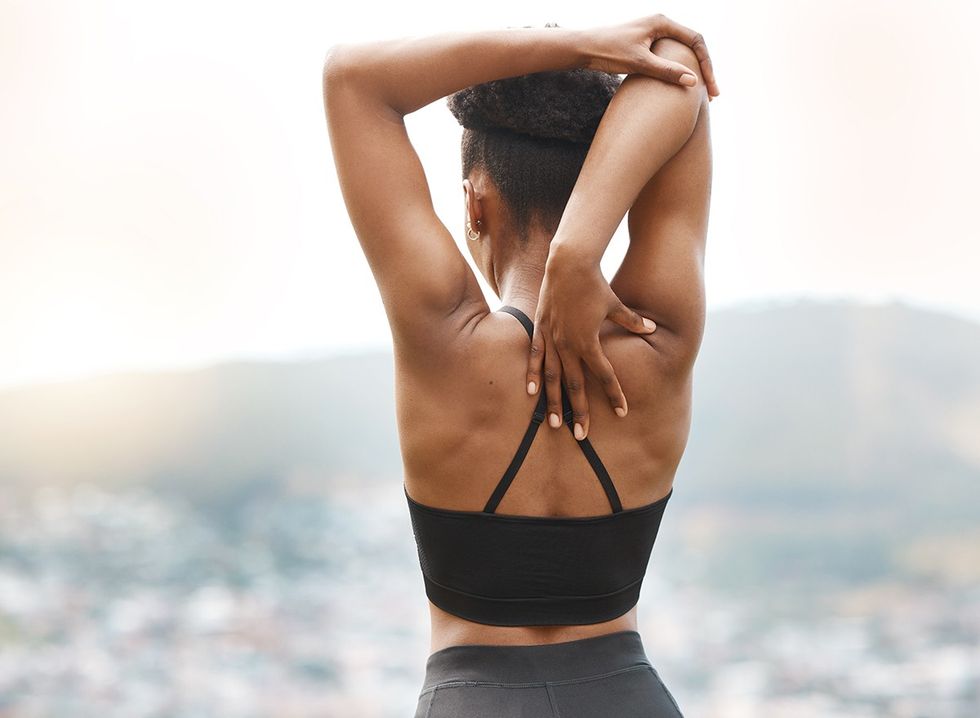If you sit at a desk all day, carry stress in your shoulders, or are one of the 65 million Americans who suffer from back pain, you want those aches to be gone… asap. Luckily, licensed chiropractor Dr. John Cybulski, DC, co-founder of the pain-relief platform The Anatomy of Therapy, is offering quick stretches that you can do to alleviate any nagging pain between your shoulder blades or lower back.
In a recent TikTok video titled “R.I.P. Back Pain” that’s amassed over 1.1 million views, over 7,000 comments, and 931K saves, Dr. Cybulski demonstrates five simple movements you can do at home to relieve rhomboid (the two muscles between your spine and shoulder blades) and thoracic spine tension. All you need is a wall, a table, a towel, and a doorway to perform these stretches, which, when done daily, can help solve your back pain. Here’s exactly how to do each move.
RELATED: 9 Best Shoes for Back Pain, Podiatrists Say
Stretch #1: Twists against a wall
The first stretch Dr. Cybulski demos in the video is a cool-looking twist while standing up against a wall.
“If you twist and press yourself into the wall, then twist back the other way 10 to 15 times, you’ll untwist the trapezius muscle, which helps with pain in the rhomboid area,” he explains in the video.
Stretch #2: Posterior rotator cuff release
For the next stretch, stand next to a table, then place your outside elbow on top of it. As you lean your body down toward the ground (so that your neck is coming close to or resting on your outstretched arm), take a deep breath and feel the stretch in the back of your shoulder.
This will ” stretch out the poster rotator cuff, which will help with pain in the rhomboid area,” Dr. Cybulski says.
Stretch #3: Thoracic spine mobilization
While standing, bend one arm at the elbow to cup the back of your neck with your hand. Use your other hand to grip that bicep, then do a backward bend with your full upper body, lifting and lowering your arms along with you.
Do this “ten to fifteen times to loosen up the thoracic spine, which will help pain in the rhomboid area,” Dr. Cybulski explains. (He didn’t mention that it also looks like a neat trick to show your friends.)
Stretch #4: Spinal towel stretch
You may already be familiar with this move. While sitting, grab one end of a towel and place it over one shoulder, behind your head. Then, use your other hand to reach behind your back to grab the other end.
Now, gently pull on the towel in both directions, alternating moving your arms up and down in tandem.
“You’ll stretch out the muscles along the spine, which will help with pain in the rhomboid area,” Dr. Cybulski says.
Stretch #5: Lat and back fascia stretch
Finally, stand in front of a door frame and bend forward at your hips to grab onto the frame with one hand, your thumb pointing down. Now, push your lower body backward as you lean down to touch your opposite toe with your free hand. Breathe deeply to release the lats and surrounding fascia.
“You’ll stretch out the latissimus dorsi, which will help with pain in the rhomboid area,” Dr. Cybulski says.
RELATED: 10 Simple Stretches to Boost Your Flexibility
According to fans of The Anatomy of Therapy’s TikTok account, these moves work.
“omg, the way I felt INSTANT relief after doing these. I haven’t been able to find good stretches for the pain in my upper back and neck. These hit the place that’s been tight forever perfectly,” one commenter said.
Another added, “I saved it and just did them all. Was able to do them all first time and it really freed up my back, Thank you.”
However, these stretches aren’t for everyone, especially if you need more tailored care.
“I have scoliosis so I am NOT doing the first one thanks,” said one commenter.
Another added, “If you are hyper flexible and attempt any of these exercises, congrats, you have dislocated at least one shoulder!”
Of course, this is why you should consult with your doctor if your back pain is serious.
These moves are not a replacement for professional care, but they can offer some people quick, low-risk ways to increase your mobility and reduce tightness—especially if you’re dealing with posture-related pain or muscle fatigue in your upper back.
Content shared from bestlifeonline.com.

